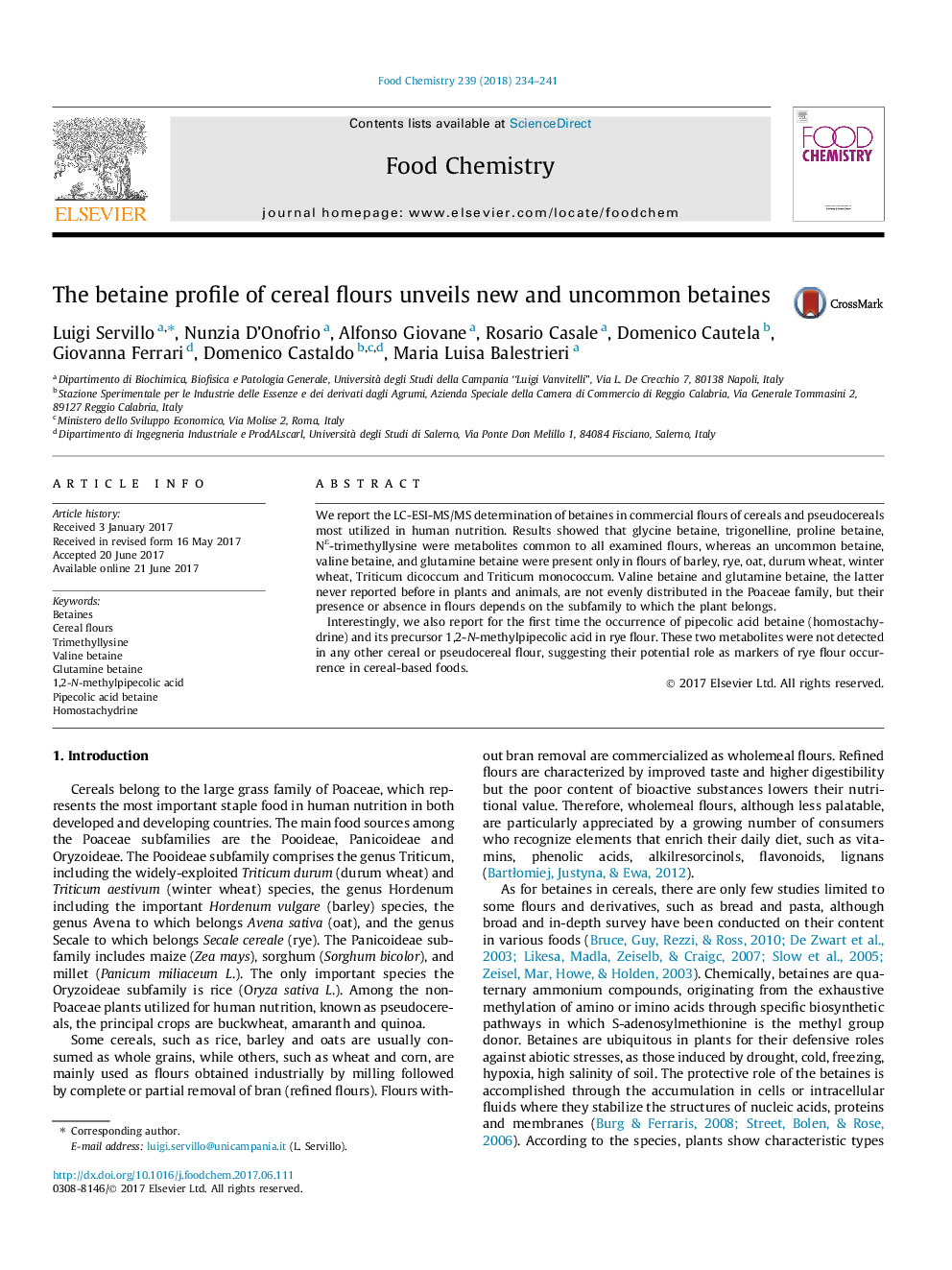| Article ID | Journal | Published Year | Pages | File Type |
|---|---|---|---|---|
| 5132966 | Food Chemistry | 2018 | 8 Pages |
â¢Betaines in flours of many cereals and pseudocereals were quantified.â¢Valine betaine was detected for the first time in cereals flours.â¢Glutamine betaine was detected for the first time in cereals flours.â¢These betaines can used for flour authenticity and botanical classification.â¢N-methylpipecolic acid and homostachydrine were detected in rye flour only.
We report the LC-ESI-MS/MS determination of betaines in commercial flours of cereals and pseudocereals most utilized in human nutrition. Results showed that glycine betaine, trigonelline, proline betaine, Nε-trimethyllysine were metabolites common to all examined flours, whereas an uncommon betaine, valine betaine, and glutamine betaine were present only in flours of barley, rye, oat, durum wheat, winter wheat, Triticum dicoccum and Triticum monococcum. Valine betaine and glutamine betaine, the latter never reported before in plants and animals, are not evenly distributed in the Poaceae family, but their presence or absence in flours depends on the subfamily to which the plant belongs.Interestingly, we also report for the first time the occurrence of pipecolic acid betaine (homostachydrine) and its precursor 1,2-N-methylpipecolic acid in rye flour. These two metabolites were not detected in any other cereal or pseudocereal flour, suggesting their potential role as markers of rye flour occurrence in cereal-based foods.
